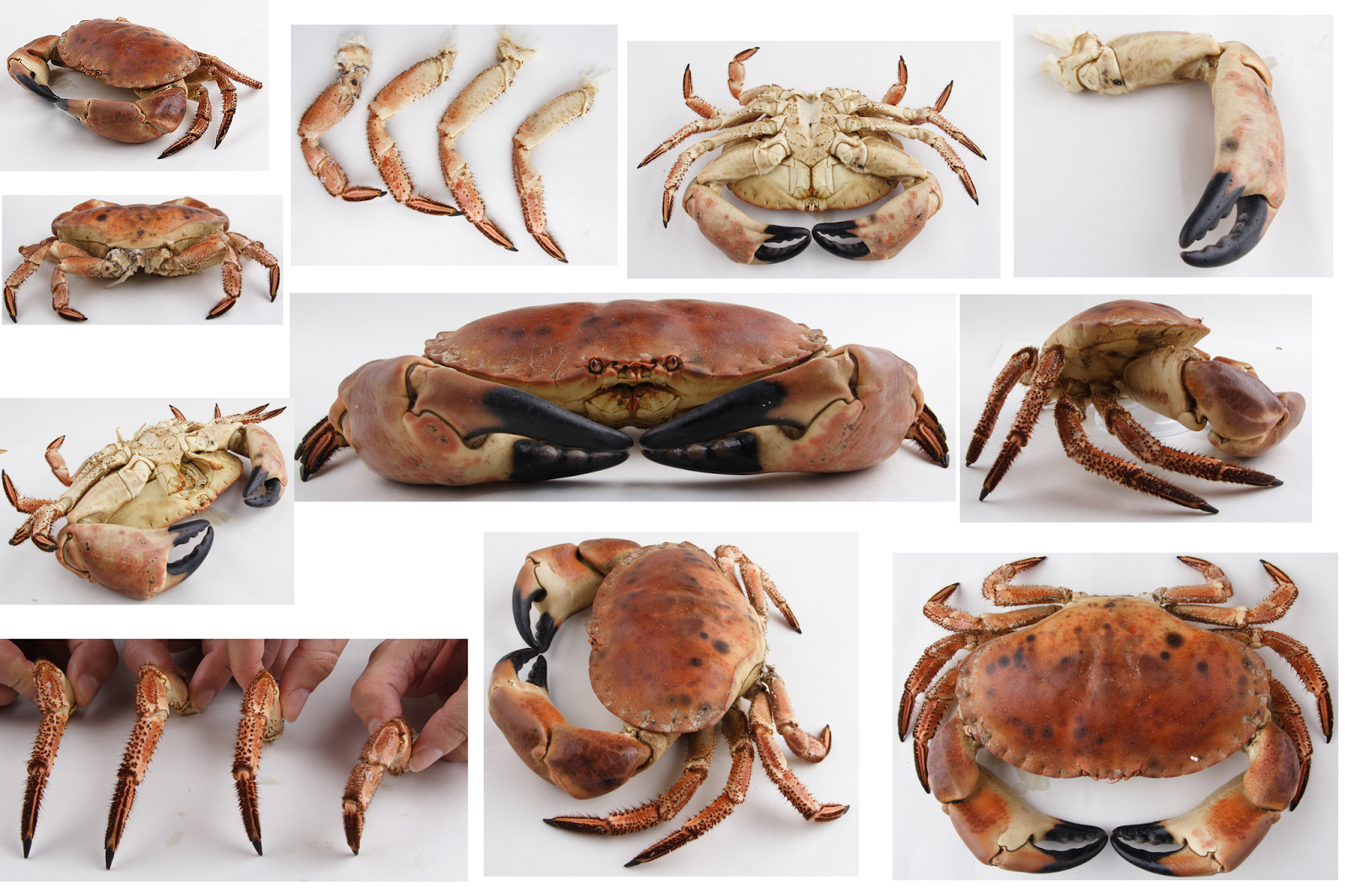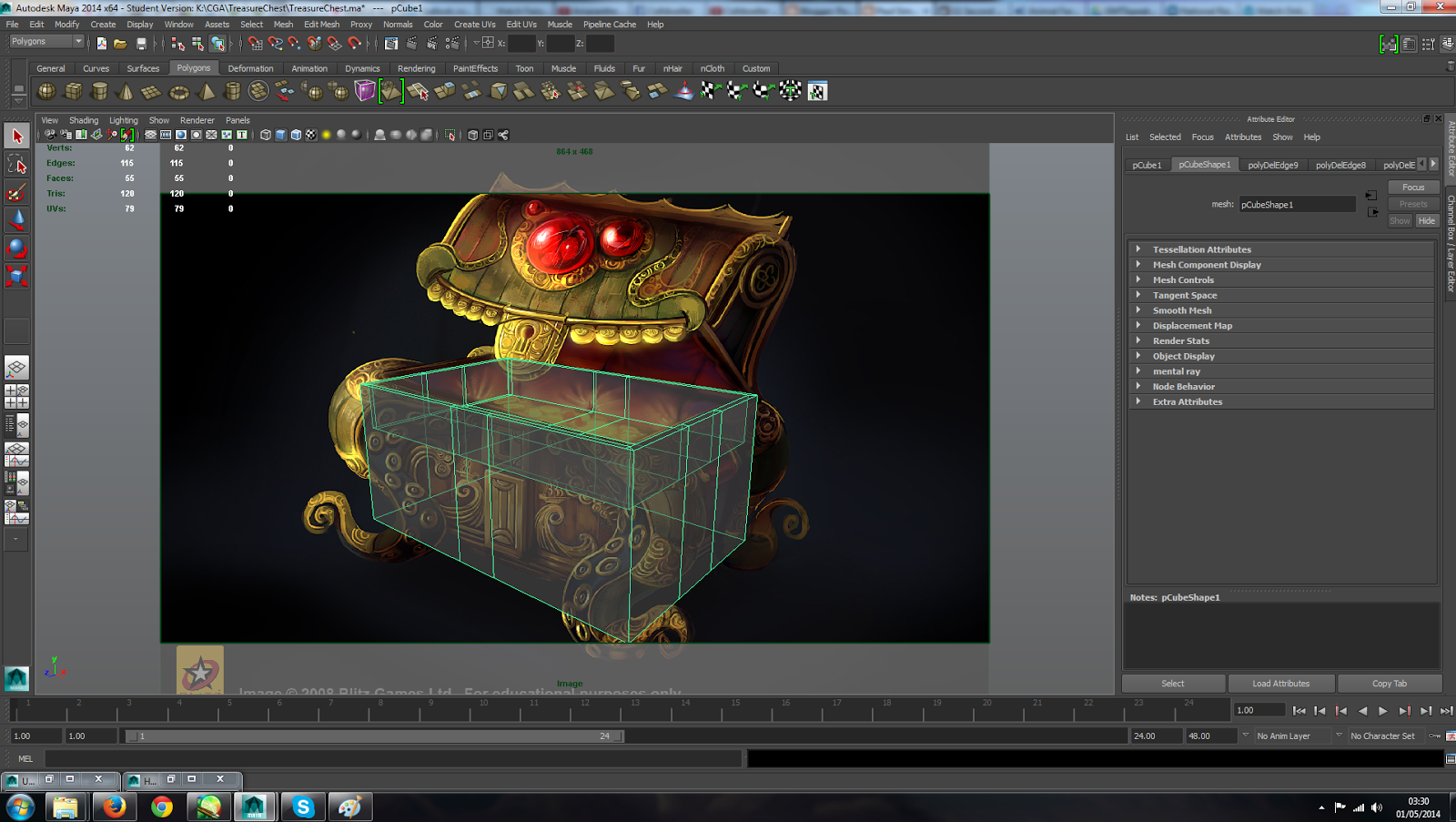Images, Textures, Sketches and Writing to come (Everything)
Our last industry standard test of the year was to create a realistic crab. This took me a while to get to as I had quite a bit work load.
For this we had 4000 triangles, and 1024x1024 textures for diffuse, normal and specular maps.
We were given a lot of reference from this, some of which you can see below.
I started in Maya, using some of the images for reference when building the crab, I started with the body, and then built the legs as separate objects, as the brief states that they need to be animated.
I then used roadkill to unwrap the individual parts for one half, and then I laid out the UVs.
After that I duplicated the other half of the crab and merged it into one, all the UVs apart from the top of the crab I mirrored.
After that I took the pieces with the largest UVs, some of which overlapped other identical parts, into Mudbox and used the many reference photos we were given to paint the crab using projections.
I then put the diffuse on the crab in Maya and exported it to Mudbox, I then used the diffuse to help guide how to sculpt detail, my main focus was the main body and the face. The diffuse needed a little cleaning up, which didn't take longer than five minutes.
I had to clean up my normal map a little, but it was a quick fix.
For the specular map I grey scaled the diffuse, inverted it, changed the brightness and luminance and painted over it.
The final image I am mostly happy with, I think there are some things I could have done better, for example there are a few seams on the diffuse. I also think the specular map could have been very slightly stronger, and the normal map could have benefited a bit from taking the diffuse and converting it with nDo.
However the model I was very happy with, I found it easy to both meet and not exceed the polygon count. I did not optimize it using triangles in favour of animation and sculpting. I also like the textures and the new methods I used to create them, making use of roadkill and Mudbox's projection tool.
I also put together a turnaround of the Crab.
http://youtu.be/zTkapUVhIlM


























































